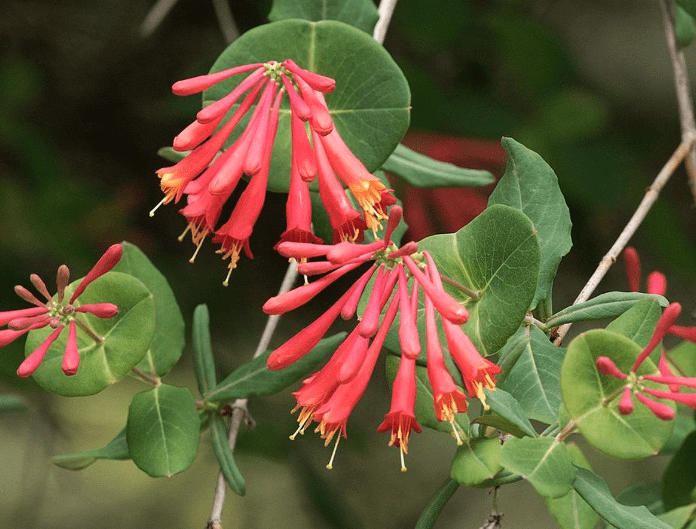
Trumpet honeysuckle (Lonicera sempervirens)
Trumpet honeysuckle, also known as Scarlet honeysuckle
Trumpet honeysuckle (Lonicera sempervirens) is a native vine in the eastern United States. Known for attracting hummingbirds, butterflies, and bees, it is commonly cultivated for its ornamental value. This plant is frequently chosen as a non-invasive alternative to Japanese honeysuckle.
Key Facts About Trumpet honeysuckle
Attributes of Trumpet honeysuckle
Scientific Classification of Trumpet honeysuckle
Toxicity
Golden pothos contains a chemical called calcium oxalate, which is mildly toxic to humans if ingested or if the skin comes into significant physical contact with its sap. Contact with the sap can also cause dermatitis: an uncomfortable, itchy rash. For dogs, ingestion will irritate the mouth and gastrointestinal tract. For cats, chewing the leaves or stems causes intense irritation of the mouth, tongue, and lips, leading to drooling or vomiting.